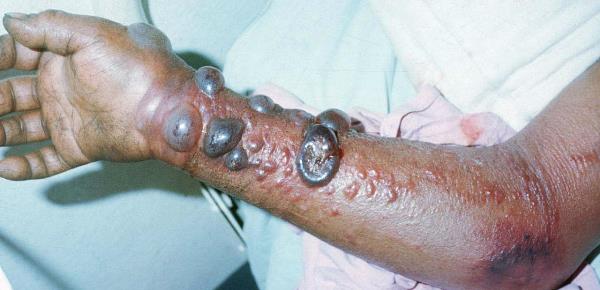Alexander Disease is a rare pathological condition of the nervous system which is actually a collection of a group of disorders known as leukodystrophy in which there is massive destruction of myelin. Myelin is a fatty covering that acts as an insulator for nerve fibers and facilitates transmission of nerve impulses from the brain to various parts of the body. When there is destruction of myelin this transmission of nerve impulses becomes impaired leading to various complications like a complete impaired nervous system which means that the affected patient is virtually disabled and not in a condition to perform any activities voluntarily.
In majority of cases, Alexander Disease begins by the time a child reaches 2 years of age. This is called as infantile form of Alexander Disease. The symptoms for this include an enlarged brain and head size, frequent seizures, spasticity of the extremities, intellectual disability, and developmental delays. In some cases, Alexander Disease strikes when the child is a bit older. This is called juvenile form of Alexander Disease and is quite rare. In extremely rare cases, Alexander Disease develops in adults as well.
Another characteristic of Alexander Disease is abundant deposition of abnormal proteins which are called as Rosenthal fibers. These deposits are mostly found in astroglial cells in the brain, the function of which is to support other cells in the brain and spinal cord.

What are the Causes of Alexander Disease?
In most of the cases, Alexander Disease is not inherited which means that the child suffering from Alexander Disease has not got it from his or her parents even though the parent may have a defective gene in them. The root cause of Alexander Disease is noted to be a defect in gene called Glial Fibrillary Acidic Protein or GFAP. This is a protein which is involved in structural development of cells and a mutation in this gene is responsible for the development of Alexander Disease.
What are the Symptoms of Alexander Disease?
The symptoms of Alexander Disease are variable and depend on when the condition develops meaning whether the condition develops in infantile, juvenile, or adult onset. The severity of the symptoms may vary depending on the extent of the disease and how much the disease has spread.
Symptoms of infantile form of Alexander Disease are:
- Megalencephaly: This is a condition in which the child will have an abnormally large brain and head size.
- Hydrocephaly: In this condition, water is accumulated in the brain which puts excessive pressure on the brain causing developmental defects.
- Failure to Thrive: The child does not meet the developmental milestones on time.
- Persistent Seizures
- Spasticity: Child will have involuntary contractions of the muscles.
- Progressive Psychomotor Retardation: In this, the child will have difficulty with performing basic tasks like walking, speaking, or performing any basic activity independently.
The symptoms of Juvenile form of Alexander Disease are:
- Problems with speech
- Difficulty swallowing
- Problems with coughing
- Spasticity of the muscles, especially the lower extremities
- Difficulty walking.
The symptoms of adult-onset Alexander Disease are:
- Ataxia
- Problems with speech
- Difficulty swallowing
- Problems with sleep.
- Adult onset Alexander Disease is the rarest form of the disorder.
How is Alexander Disease Diagnosed?
If Alexander Disease is suspected based on the signs and symptoms shown by the patient, a simple genetic testing is enough to confirm Alexander Disease as the defective gene causing this condition is well known and can be easily identified on genetic testing and can confirm the diagnosis of Alexander Disease.
How is Alexander Disease Treated?
Unfortunately, there is no cure for Alexander Disease as of yet. The treatment for Alexander Disease is basically symptomatic and supportive. Certain conditions like seizures and hydrocephaly can be treated. Seizures can be controlled with antiepileptic medications while hydrocephaly can be treated with surgery to drain water from the brain and thus relieve the pressure put on the brain by the water accumulated inside it. On an experimental basis, bone marrow transplantation has been tried as a treatment for Alexander Disease but it has not been found to be much successful.
What is the Life Expectancy from Alexander Disease?
The life expectancy of a patient with Alexander Disease depends on the onset of the condition. Children with infantile Alexander Disease may not live beyond one to two years of life and even if they do, they can go up to maximum of 10 years. Children with juvenile form of Alexander Disease tend to live up to middle age after the diagnosis of Alexander Disease.










